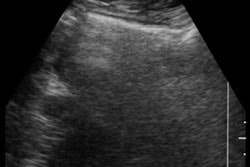Without frequent reminders, physicians may not be motivated enough to keep up with federal regulations and provide accurate clinical patient histories, according to an Indiana University study.
Using a random sample of 150 chest radiograph requisitions, the group tracked how well physicians met two U.S. Health Care Financing Administration (HCFA) requirements: stating current diagnosis and stating an appropriate indication for an imaging study in patient records. Data was gleaned before and after an intervention in the form of a letter, which reminded referring physicians, and radiologists, about the HCFA guidelines.
"Examinations without an appropriate indication are considered to be unlawful by HCFA," said Dr. Richard Gunderman, an assistant professor of radiology and medical education who spoke at the American Roentgen Ray Society meeting in May. "Who's responsible for those studies performed without a current patient diagnosis and appropriate indications? The radiologist who performed the exam and the referring physician."
Before the intervention letter was sent out at the Indianapolis-based academic medical center, the current diagnoses were missing in about 29% of the cases, while the appropriate indications were incomplete in approximately 31%, Gunderman said. After the letter went out, the number of missing current diagnoses dropped to 8.7%. Cases in which appropriate indication was not given fell to 12%.
But "we went back three months later and, in the absence of further intervention, we found a significant decay in the appropriate indication and clinical diagnosis," Gunderman said. "The rate at which the information was missing had doubled [compared to intervention results]."
Gunderman acknowledged that in order to achieve substantial results, the radiology department did have to play a little hardball.
The intervention letters were sent in April of 1999, he explained. Two months later, all requisitions that were incomplete were sent back. By July, the imaging department refused to perform studies in which a current diagnosis and appropriate indication were left out. As a result, a few patients left without undergoing an imaging exam, especially if the referring physician could not be reached for further information.
"As you can imagine, it creates a significant fracture in the relationship between the radiologist and the patient," Gunderman said. "On the other hand, running afoul of the law was something that we weren't comfortable with."
Gunderman stressed that complying with the letter of the law, as well as its spirit, ultimately improves patient care, particularly by insuring that the proper exam is performed. One example would be a patient with pneumoperitonitis who was seen as a surgical emergency. Because of a lack of complete clinical history, the doctors were not aware that the patient had recently undergone a laparotomy, he said.
"The less we know about the patient, the lower the level of excellence we will achieve," Gunderman said. "Clinical information is crucial in making a number of important decisions. If we don't have clinical information, our performance may be compromised in a way that decreases the value of diagnostic imaging services."
By Shalmali Pal
AuntMinnie.com staff writer
June 2, 2000
Let AuntMinnie.com know what you think about this story.
Copyright © 2000 AuntMinnie.com



















